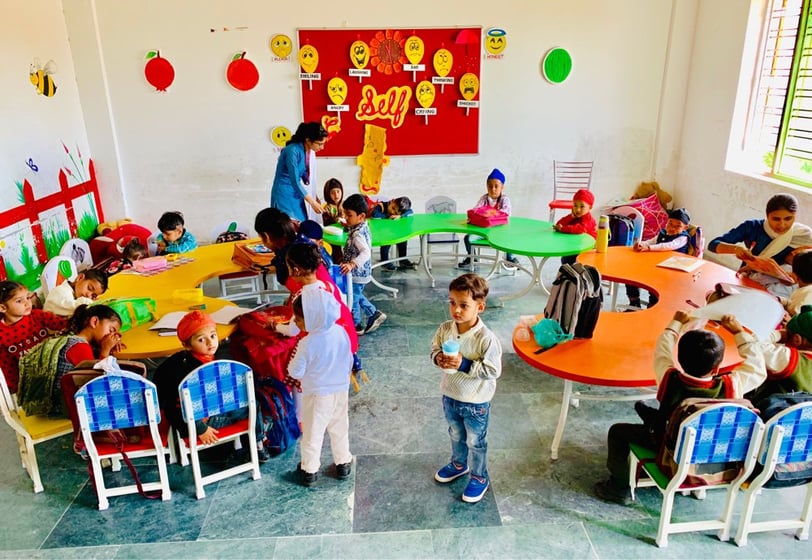Creating Multi-Functional Classrooms: A Guide for ....
Multi-functional classrooms redefine learning spaces, blending adaptability, technology, and utility. These designs cater to diverse learning styles, maximize space efficiency, and foster collaboration. Key features include flexible furniture, modular layouts, and integrated tech like smartboards and VR tools. Examples like Amity International and Kota coaching centers showcase innovative use. While challenges like budgets persist, phased implementation and smart planning make these classrooms a sustainable future for Indian education.
1/1/20253 min read


Creating Multi-Functional Classrooms: A Guide for Schools and Institutes
The modern classroom is no longer just a space for lectures and note-taking. As education evolves, so does the design of learning environments. Multi-functional classrooms are becoming the cornerstone of progressive education, offering flexibility and utility that cater to diverse learning needs. In India, where education systems accommodate a wide range of learners—from primary students to competitive exam aspirants—multi-functional classrooms present an innovative solution to maximize both space and resources.
What Are Multi-Functional Classrooms?
A multi-functional classroom is a space designed to adapt to various teaching methods, learning activities, and group dynamics. These classrooms seamlessly shift from traditional setups to collaborative, tech-enabled, or activity-based layouts with minimal effort. They are equipped with flexible furniture, smart technology, and versatile layouts to support a dynamic educational experience.
Why Multi-Functional Classrooms Are Important
Maximizing Space Efficiency: In densely populated cities like Mumbai and Delhi, space is a premium commodity. Multi-functional classrooms allow schools and coaching centers to utilize limited space effectively.
Supporting Diverse Learning Styles: Whether it’s group discussions, individual study, or tech-driven lessons, these classrooms cater to the varied needs of students.
Fostering Collaboration: Collaborative learning is integral to modern education. These classrooms encourage teamwork through modular seating and group-friendly layouts.
Cost-Effective Solutions: Instead of maintaining separate spaces for different activities, a single multi-functional room serves multiple purposes, reducing overhead costs.
Key Features of Multi-Functional Classrooms
1. Flexible Furniture
Movable chairs and tables allow classrooms to be reconfigured for lectures, group work, or interactive sessions. Foldable desks and stackable chairs are particularly useful in coaching centers and urban schools where space is limited.
Example: Coaching centers like FIITJEE use tiered seating that can be rearranged for mock exams or collaborative sessions.
2. Integrated Technology
Smartboards, projectors, and charging stations ensure classrooms are ready for digital learning. Integration of AR and VR tools adds an immersive element to the learning experience.
Example: Amity International School in Noida integrates smartboards with cloud-based learning systems, allowing seamless transitions between offline and online learning.
3. Modular Layouts
Partition walls and movable panels can transform a single large classroom into smaller breakout rooms. This is ideal for coaching institutes or training centers where batch sizes vary.
Example: Training institutes in Bengaluru often use soundproof partition panels to conduct simultaneous sessions in a shared space.
4. Storage Solutions
Hidden storage options like under-desk compartments or wall-mounted shelves keep the classroom organized and clutter-free. This design is particularly beneficial for schools with limited infrastructure.
Example: Many government-aided schools in Kerala use locally crafted storage solutions to optimize space.
How to Design a Multi-Functional Classroom
Assess Needs and Goals: Understand the primary activities and teaching methods the classroom will support. For example, a primary school classroom might prioritize activity zones, while a coaching institute may focus on lecture setups.
Invest in Quality Furniture: Durable, lightweight, and flexible furniture is a must. Consider options from Indian manufacturers like Godrej Interior for cost-effective solutions.
Incorporate Technology Thoughtfully: Avoid overcrowding with gadgets. Instead, integrate essential tools like smartboards and charging docks that align with the curriculum.
Emphasize Lighting and Acoustics: Ensure the classroom is well-lit and soundproof to minimize distractions.
Plan for Future Growth: Design with scalability in mind. Modular layouts can be expanded or adjusted as needs evolve.
Challenges in Implementing Multi-Functional Classrooms in India
Budget Constraints: Many schools and institutes operate on tight budgets, making it difficult to invest in high-quality materials and technology.
Solution: Opt for phased implementation, starting with essential elements and gradually upgrading.
Space Limitations: Urban schools often face severe space crunches.
Solution: Use vertical storage, foldable furniture, and hybrid spaces to maximize utility.Resistance to Change: Teachers and administrators accustomed to traditional setups may resist adopting new designs.
Solution: Provide training and highlight the benefits of multi-functional layouts to gain buy-in.
Case Studies: Indian Schools and Institutes Adopting Multi-Functional Designs
Coaching Centers in Kota: Centers like Allen and Resonance have invested in flexible layouts and tech-enabled classrooms to cater to diverse learning modules and large student batches.
Private Schools in Tier-1 Cities: Schools like The Shri Ram School in Delhi incorporate modular furniture and collaborative zones to encourage interactive learning.
Government Schools in Rural Areas: With the help of NGOs, many schools in Tamil Nadu have transformed single-purpose rooms into multi-functional spaces using low-cost furniture and shared resources.
Conclusion
Multi-functional classrooms are not just a trend but a necessity for modern education in India. By embracing flexibility, integrating technology, and optimizing space, schools and institutes can create dynamic environments that cater to diverse learning needs. Whether it’s a bustling coaching center in Mumbai or a rural school in Bihar, the principles of multi-functional design can revolutionize how students learn and grow. Investing in these designs today will prepare institutions for the challenges and opportunities of tomorrow.
Consultation
Management
info@classroombanao.com
98101 72399
@ Unit of Space and Fit Out Technologies
Quick links
Blogs
Store
© 2024. All rights reserved.
